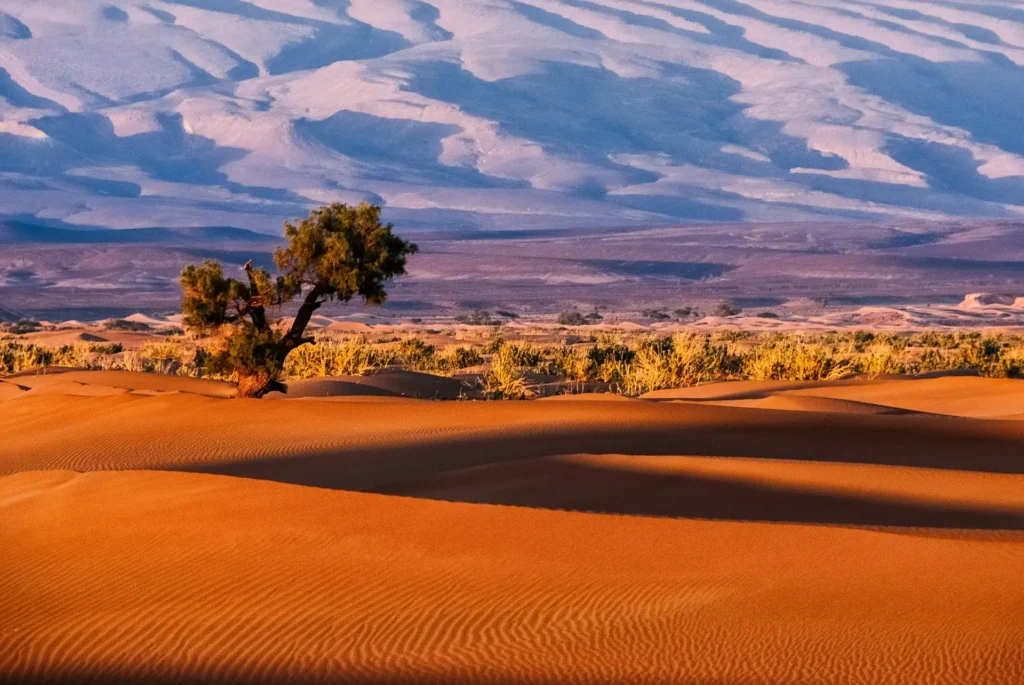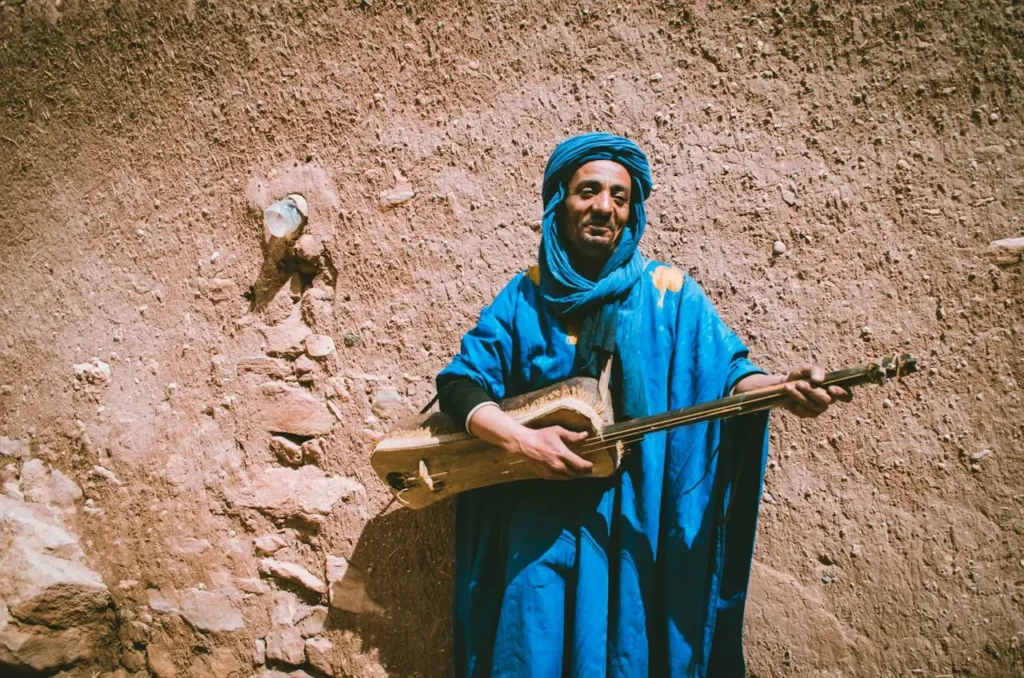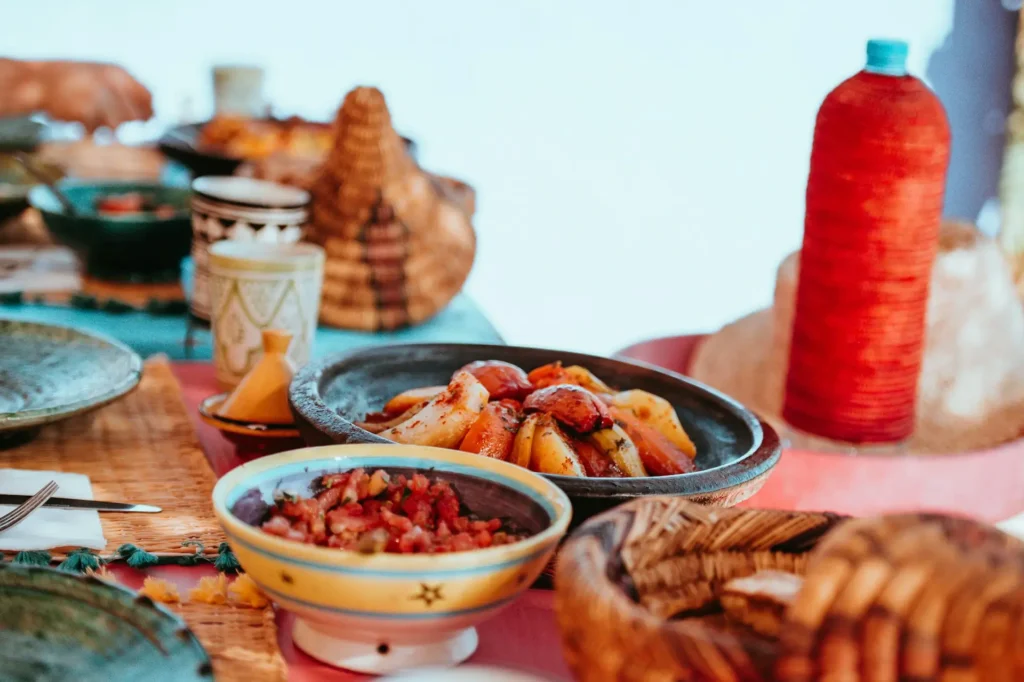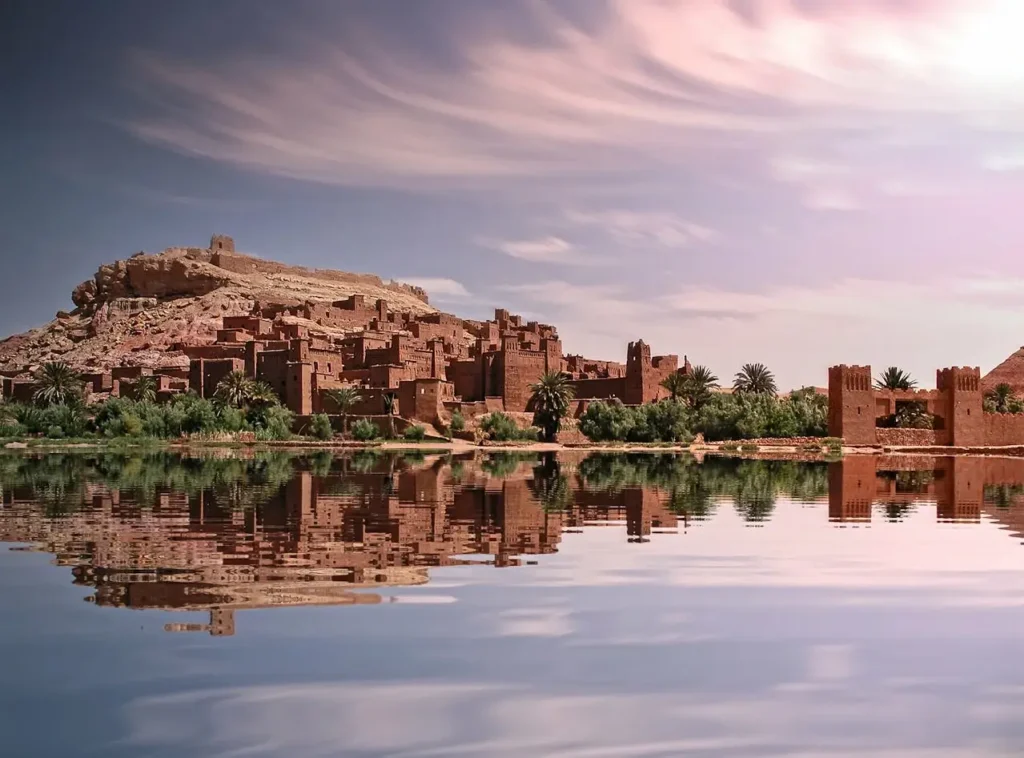Imagine standing in the middle of a bustling medina, surrounded by the vibrant colors of spices, the hum of bartering, and the scent of freshly baked bread. Now, picture yourself just a few hours later, gazing at the endless golden dunes of the Sahara Desert under a sky so starry it feels like a dream. This is Morocco—a country that doesn’t just offer a single experience but a thousand worlds packed into one. From its dramatic landscapes to its rich cultural tapestry, Morocco’s diversity is unparalleled. If you’ve ever wondered why this North African gem feels like a continent unto itself, let’s take a deep dive into what makes Morocco so uniquely captivating.
Morocco’s Geographic Diversity – A Land of Contrasts

From Desert to Coastline
Morocco’s geography is a masterpiece of contrasts. In the south, the Sahara Desert stretches endlessly, its golden dunes shifting with the wind. Here, you can ride a camel through the Erg Chebbi dunes near Merzouga or spend a night in a luxury desert camp, where the silence is broken only by the crackling of a campfire. The Sahara isn’t just a desert; it’s a place where time seems to stand still, and the stars light up the night like nowhere else on Earth.
But Morocco isn’t just about deserts. Head west, and you’ll find yourself on the Atlantic coastline, where surfers catch waves in Taghazout and fishermen haul in their daily catch in Essaouira. The Mediterranean coast to the north offers a different vibe, with its calm waters and charming seaside towns like Al Hoceima. And let’s not forget the Atlas Mountains, which slice through the country like a rugged spine. Whether you’re hiking to the summit of Mount Toubkal or exploring the lush valleys dotted with Berber villages, the mountains offer a refreshing escape from the heat of the lowlands.
- Key Highlights:
- Sahara Desert: Golden dunes, camel treks, and starlit nights.
- Atlantic Coast: Surfing, fishing villages, and fresh seafood.
- Atlas Mountains: Snow-capped peaks, hiking trails, and Berber culture.
Climate Variations
Morocco’s climate is as diverse as its landscapes. In the Sahara, temperatures can soar above 40°C (104°F) during the day, while nights can be surprisingly chilly. Along the coast, the Mediterranean and Atlantic breezes keep things mild, making cities like Casablanca and Tangier pleasant year-round. In the Atlas Mountains, you’ll experience a more continental climate, with snow covering the peaks in winter and cool, refreshing air in the summer.
- Climate Zones:
- Arid (Sahara Desert)
- Mediterranean (Coastal Areas)
- Continental (Atlas Mountains)
Cultural Diversity – A Melting Pot of Traditions

Berber, Arab, and African Influences
Morocco’s cultural diversity is a reflection of its history. The indigenous Berber people, also known as Amazigh, have lived here for thousands of years, and their influence is evident in the language, music, and traditions. The Arab conquest in the 7th century brought Islam and a new layer of culture, while sub-Saharan African influences can be seen in the vibrant Gnawa music and dance.
Cities like Fes and Marrakech are living museums of this cultural blend. In Fes, the ancient medina is a labyrinth of narrow streets, where artisans craft leather goods using techniques passed down through generations. Marrakech, on the other hand, is a sensory overload, with its bustling souks, lively Jemaa el-Fnaa square, and stunning palaces like the Bahia Palace.
- Must-Visit Cultural Landmarks:
- Medina of Fes (UNESCO World Heritage Site)
- Ait Benhaddou (Ancient Berber Kasbah)
- Jemaa el-Fnaa (Marrakech’s Iconic Square)
Languages and Religions
Morocco is a multilingual country, with Arabic and Berber as the official languages. French is widely spoken, especially in business and education, while Spanish is common in the north. This linguistic diversity reflects Morocco’s historical ties to Europe and Africa.
Religiously, Morocco is predominantly Muslim, but it’s also home to Jewish and Christian communities. The coexistence of these faiths is evident in places like the Jewish Quarter (Mellah) in Marrakech and the historic synagogues of Casablanca.
- Languages Spoken:
- Arabic
- Berber (Amazigh)
- French
- Spanish
Culinary Diversity – A Feast for the Senses

Regional Flavors
Moroccan cuisine is a celebration of flavors, with each region offering its own specialties. In the coastal cities, seafood takes center stage. Essaouira is famous for its grilled sardines, while Oualidia is known for its oysters. Inland, tagines and couscous are the staples, with each family adding their own twist to these classic dishes.
The Sahara region offers unique treats like dates and almonds, often paired with a glass of sweet mint tea. And let’s not forget street food—msemen (flaky pancakes) and bissara (fava bean soup) are must-tries.
- Must-Try Dishes:
- Tagine (Lamb, Chicken, or Vegetable)
- Couscous (Served on Fridays)
- Pastilla (Sweet and Savory Pie)
- Zaalouk (Eggplant Salad)
The Art of Moroccan Tea
No visit to Morocco is complete without experiencing the ritual of mint tea. Served in ornate glasses, this sweet, refreshing drink is a symbol of hospitality. Whether you’re in a riad, a market, or a desert camp, you’ll likely be offered a glass of tea as a warm welcome.
Architectural Diversity – A Blend of Old and New
Ancient Medinas and Modern Cities
Morocco’s architecture is a testament to its rich history. The ancient medinas, with their narrow alleys and intricate mosaics, transport you back in time. In contrast, cities like Casablanca boast modern landmarks like the Hassan II Mosque, one of the largest mosques in the world.
- Iconic Structures:
- Koutoubia Mosque (Marrakech)
- Hassan Tower (Rabat)
- Chellah Necropolis (Rabat)
Riads and Kasbahs
Staying in a riad is a quintessential Moroccan experience. These traditional courtyard homes are often hidden behind unassuming doors, but inside, you’ll find lush gardens, intricate tilework, and serene fountains. Kasbahs, on the other hand, are fortified villages that once served as strongholds for local rulers. Ait Benhaddou, a UNESCO World Heritage Site, is one of the most famous examples.
Natural Diversity – A Haven for Adventure Seekers
Sahara Desert Adventures
The Sahara is the ultimate playground for adventure seekers. Whether you’re riding a camel across the dunes, sandboarding down steep slopes, or camping under the stars, the desert offers an unforgettable experience.
Hiking and Outdoor Activities
The Atlas Mountains are a hiker’s paradise, with trails ranging from easy walks to challenging climbs. The Todra Gorge and Dades Valley are also popular for rock climbing and photography.
- Top Natural Attractions:
- Ouzoud Waterfalls
- Dades Valley
- Paradise Valley
Conclusion – Morocco Diversity Awaits You
Morocco is a country that defies expectations. Its diversity—geographic, cultural, culinary, and architectural—makes it a destination like no other. Whether you’re exploring the bustling medinas, trekking through the Atlas Mountains, or savoring a steaming tagine, you’ll find that Morocco feels like a thousand worlds in one. So, pack your bags and let Morocco’s diversity take you on the journey of a lifetime.
FAQ about Morocco diversity
What makes Morocco diversity unique?
Morocco’s diversity is unique because it combines dramatic landscapes, rich cultural traditions, and a blend of historical influences, all within a single country.
How does Morocco’s geography contribute to its diversity?
From the Sahara Desert to the Atlas Mountains and the Atlantic coastline, Morocco’s varied geography creates distinct climates and ecosystems.
What are some must-visit places to experience Morocco diversity?
Don’t miss Marrakech, Fes, Chefchaouen, the Sahara Desert, and the Atlas Mountains.
How does Moroccan cuisine reflect its diversity?
Moroccan cuisine blends Berber, Arab, and Mediterranean influences, with regional specialties like tagines, couscous, and seafood dishes.
Is Morocco safe for travelers?
Yes, Morocco is generally safe for travelers, but it’s always wise to stay informed and respect local customs.
